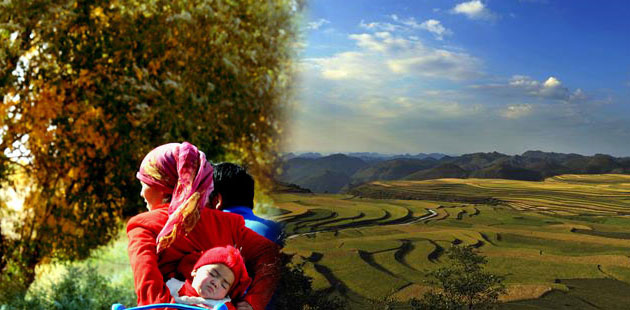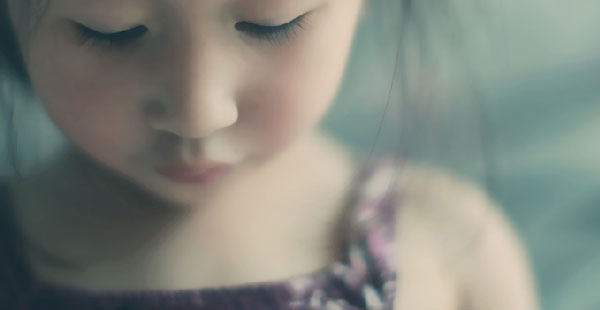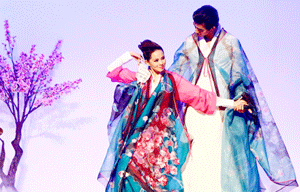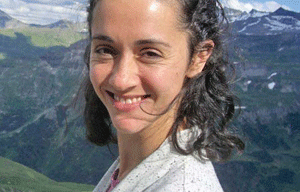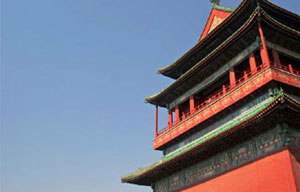Ballet with a twist - and flips
Updated: 2011-11-01 07:37
By Chen Nan (China Daily)
|
|||||||||
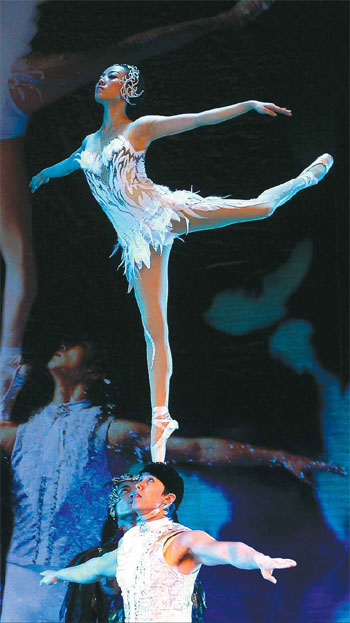

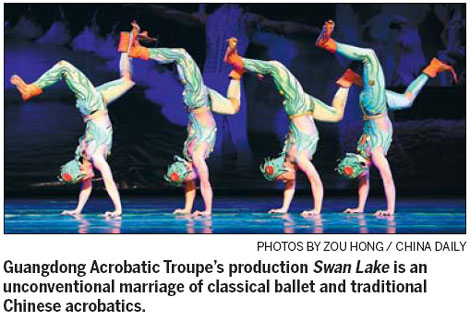
An acrobatic take on Swan Lake has global critics jumping for joy. Chen Nan reports.
Aballerina performs a pirouette on her partner's shoulder - and then another on his head. This is an iconic scene from the version of Swan Lake the Guangdong Acrobatic Troupe of China premiered in 2005.
The performance's fusion of dance and stunts has earned it the global acclaim that has propelled several world tours and 2,000 shows at such venues as the Royal Opera House of London, the Kennedy Center in Washington and the Kremlin Ballet Theater in Moscow.
It will return to the Beijing Exhibition Center from Nov 25 to Nov 27.
The concept of infusing acrobatics into the performance of Tchaikovsky's masterpiece was born when two troupe members - Wei Baohua and his wife, Wu Zhengdan - created Oriental Swan Ballet on Top of the Head.
The production's choreographer and director Zhao Ming says the show encapsulates the couple's dynamism and represents a global coming-out party for China's acrobatic talent.
"I've seen Chinese acrobatic troupes dazzle audiences in big tents overseas," Zhao says. "It's time for them to come out of tents and onto theater stages."
Ballet came to China 45 years ago and is viewed as a high-class art form. Swan Lake is a perennial favorite in the country, Zhao says.
Acrobatics are a Chinese tradition, dating back to the Western Han Dynasty (206 BC-AD 24), struggling to survive market competition.
It seemed a risky venture to intermingle the two art forms, but doing so zapped new life into both, says Zhao, who studied modern dance in New York in 1984 and was a Hong Kong Ballet principal dancer from 1993 to 1995.
"It's a new visual experience for audiences, who relish the beauty of ballet and skills of acrobatics," he says.
Zhao has thrown in a dash of humor, too. The iconic dance of the four little swans scene, for instance, features no fowl but, rather, four small frogs portrayed by acrobats dancing on their arms.
"Acrobats traditionally study stunts, but they must also learn acting and dancing for this Swan Lake," he says.
"The hard part for me and the performers is to fulfill the goals set by Tchaikovsky's music. Everything must come from the music, which is the most important part of the show."
Zhao credits the show's international acclaim to the talent of the performers, especially Wei and Wu.
An entirely new cast, trained by the couple over the past six years, will appear at the Beijing performance.
The Swan Princess, Yu Wanqing, and her prince, Chen Dong, epitomize the unconventional marriage of classical ballet and traditional Chinese acrobatics in their performances. The rehearsal room falls silent when Yu balances on her partner's head with her legs extended in vertical splits.
 |
Ballerina Liu Jie plays the Black Swan. The Zhengzhou, Henan province, native studied with Shenyang Ballet Troupe before joining the Guangdong Acrobatic Troupe of China.
The 19-year-old specializes in performing the Ballet On Top of the Head program series created following Swan Lake's success.
"The trainer said I was a good ballerina but needed to start from scratch to learn acrobatics," she says. "That was really hard."
Liu and her peers underwent an average of eight hours a day of training in acting, dancing and acrobatics. She says handstands were particularly difficult for her, as she was accustomed to dancing on her feet.
She recalls feeling ecstatic when she became able to whirl atop her partner's shoulders and head without safety ropes in 2008.
Wu and Wei were child athletes, who also underwent the challenging transition to acrobatics when they joined the Guangdong Acrobatic Troupe of China.
"A similar physical elasticity is required of both acrobats and dancers," Wu says. "But each skill pushes the other to greater heights when combined. Ballet acquires higher levels of control, while acrobatics take on enhanced gracefulness, musicality and expressiveness."
The couple plans to scour the country for talent and explore new innovative possibilities for ancient acrobatic traditions.




